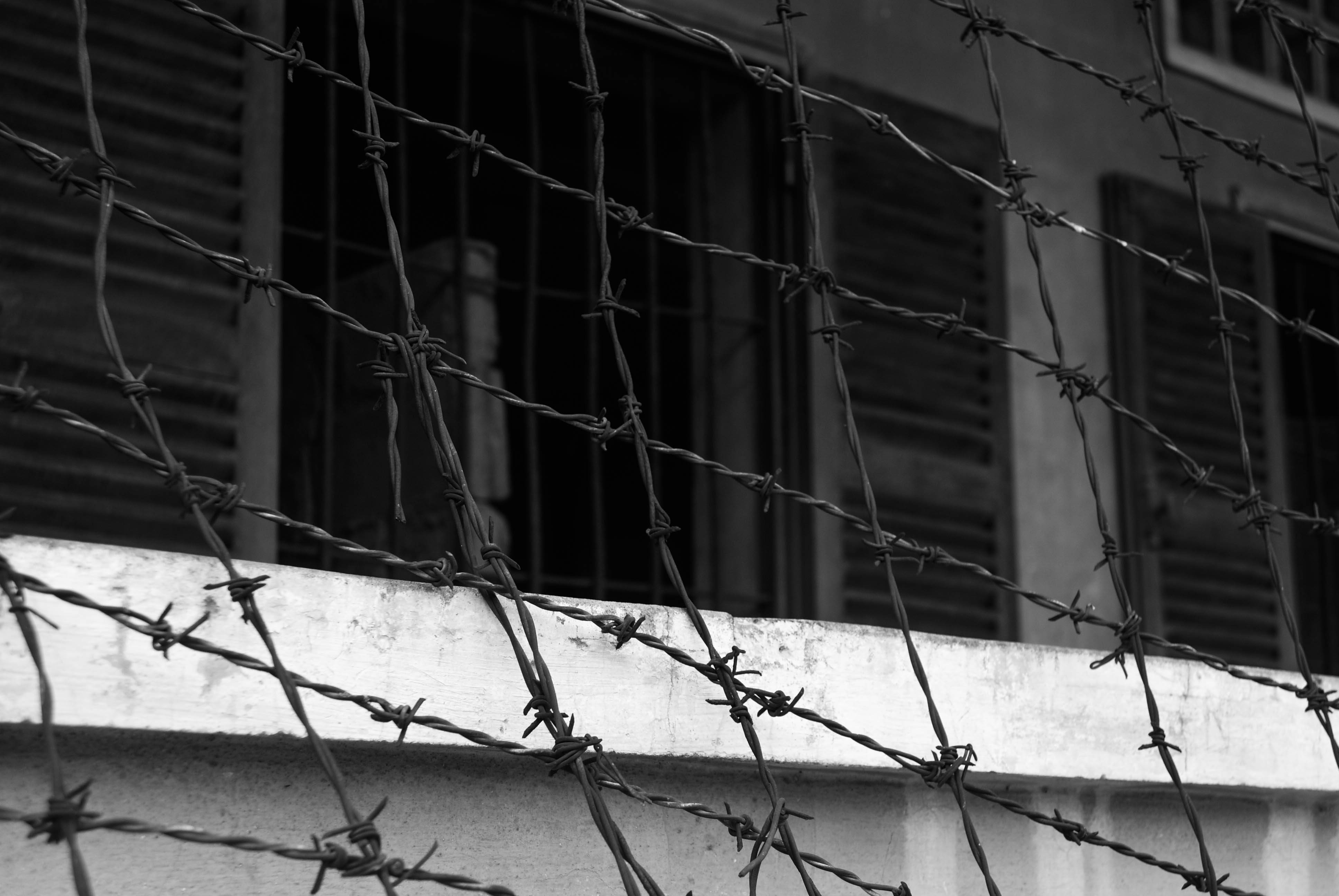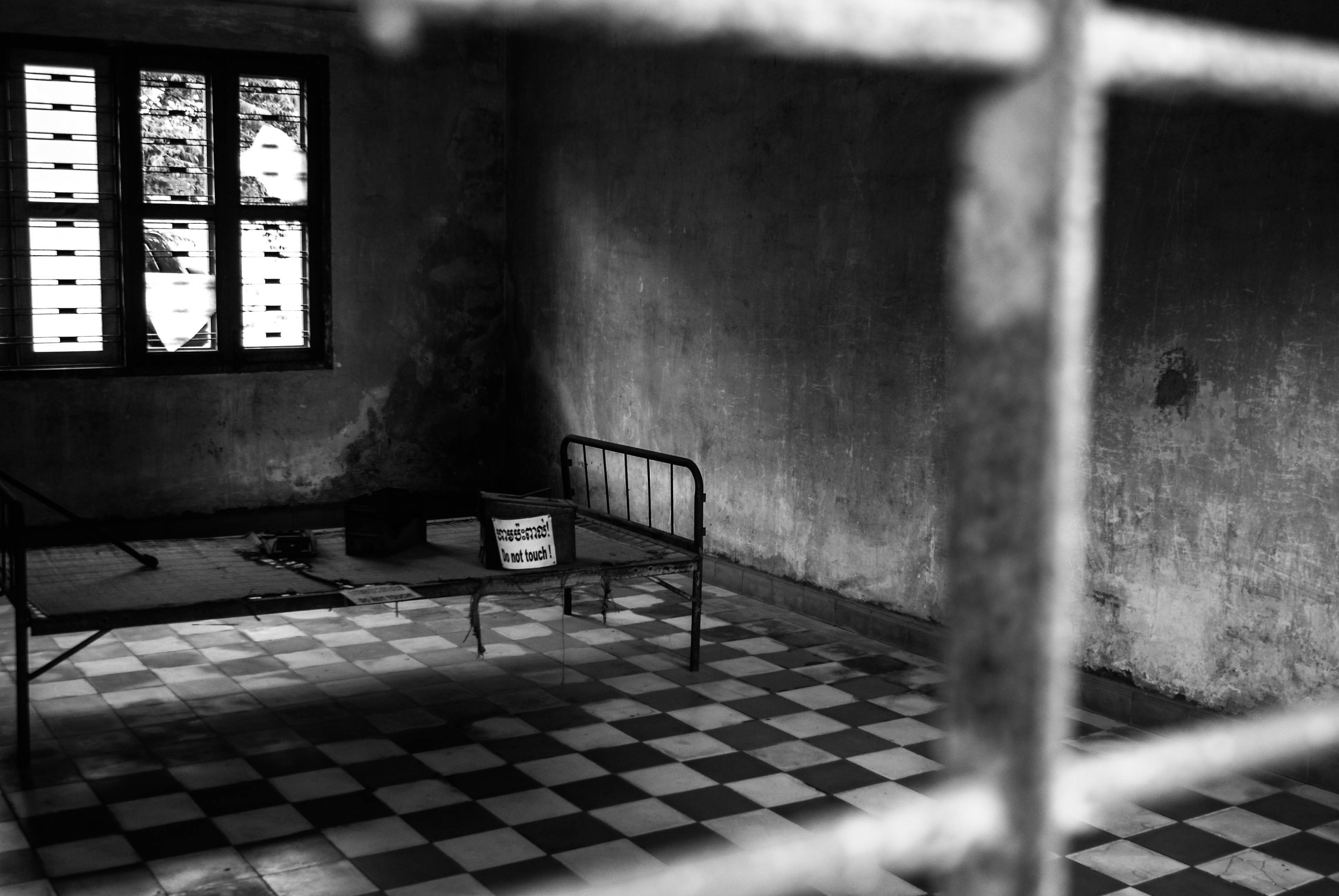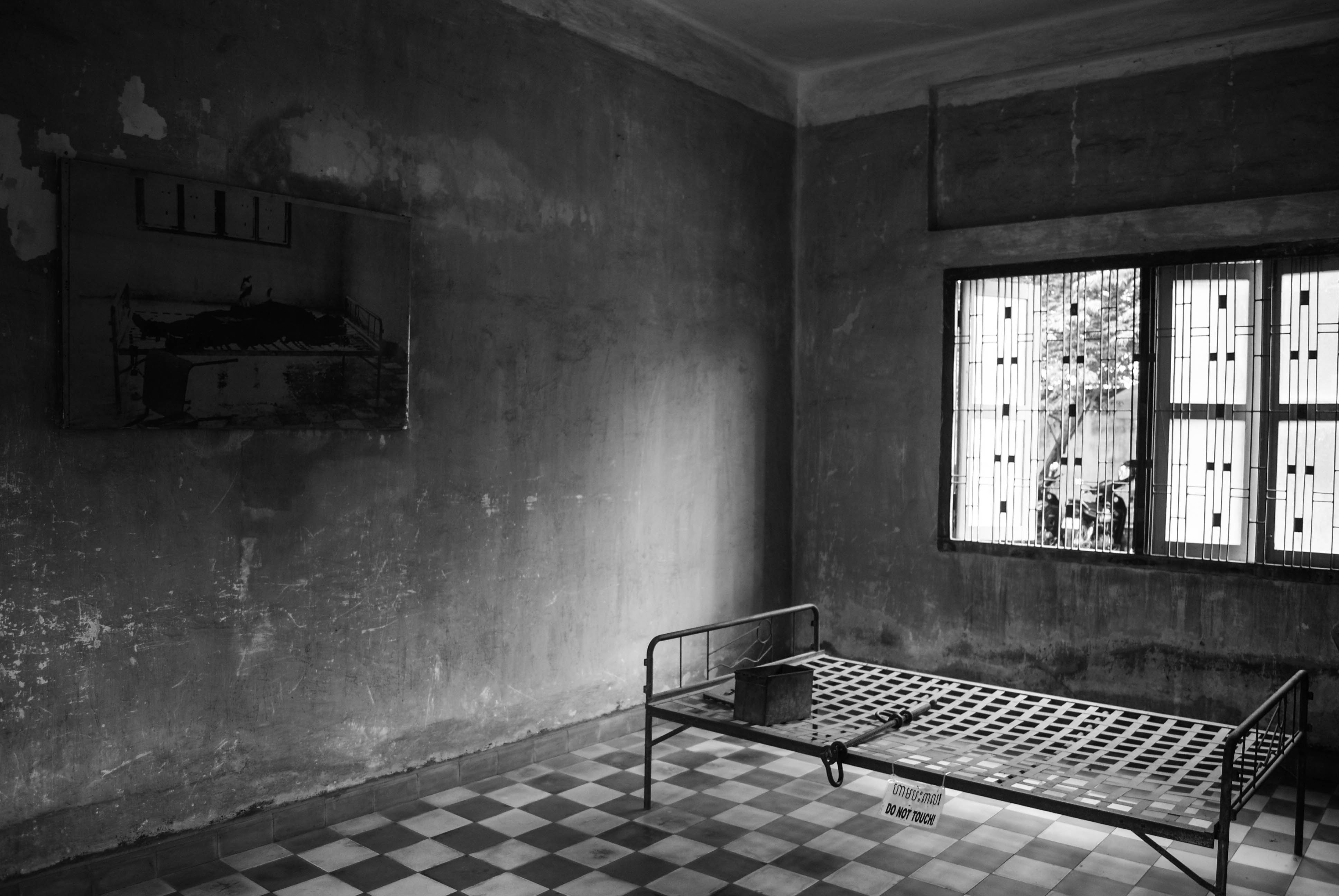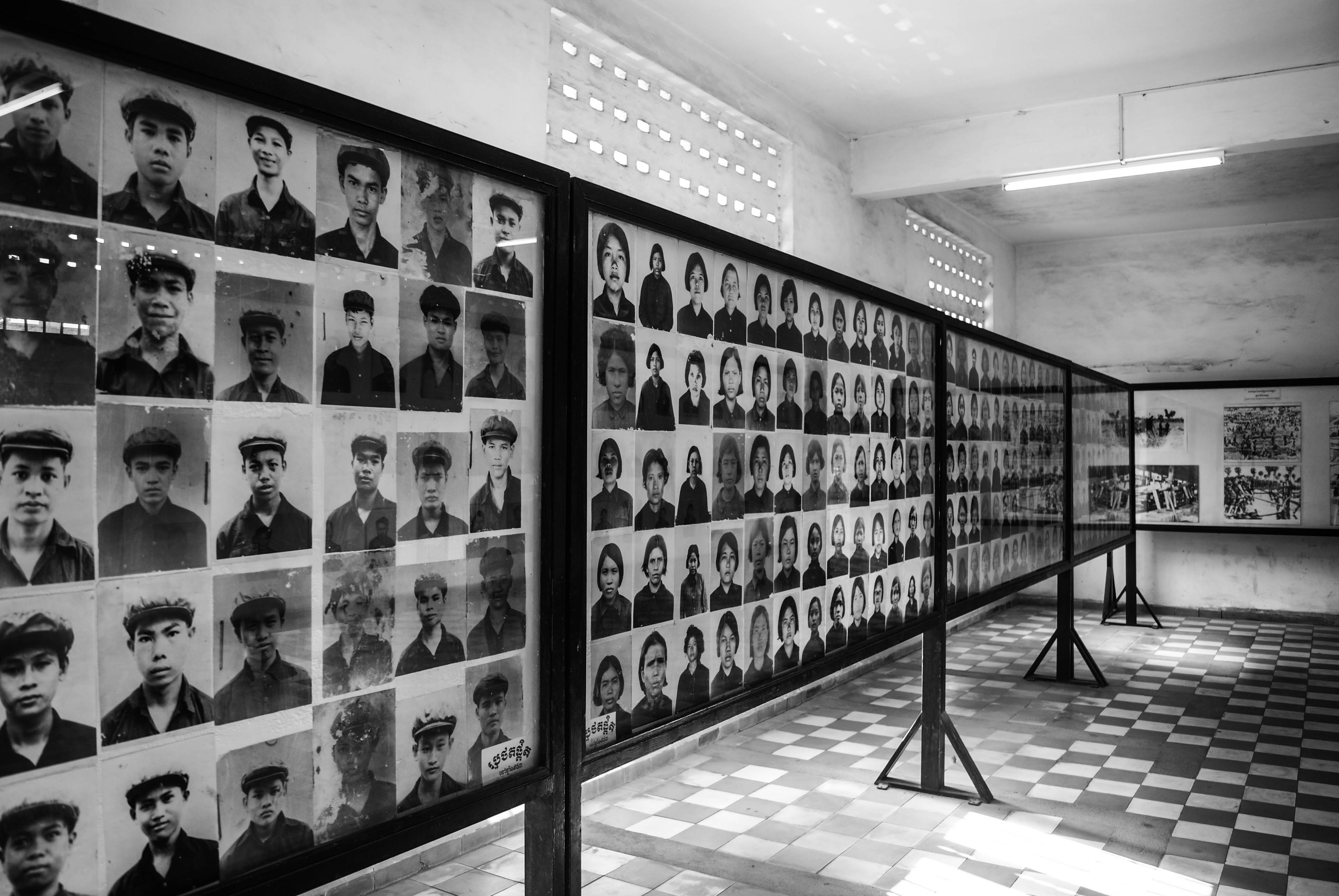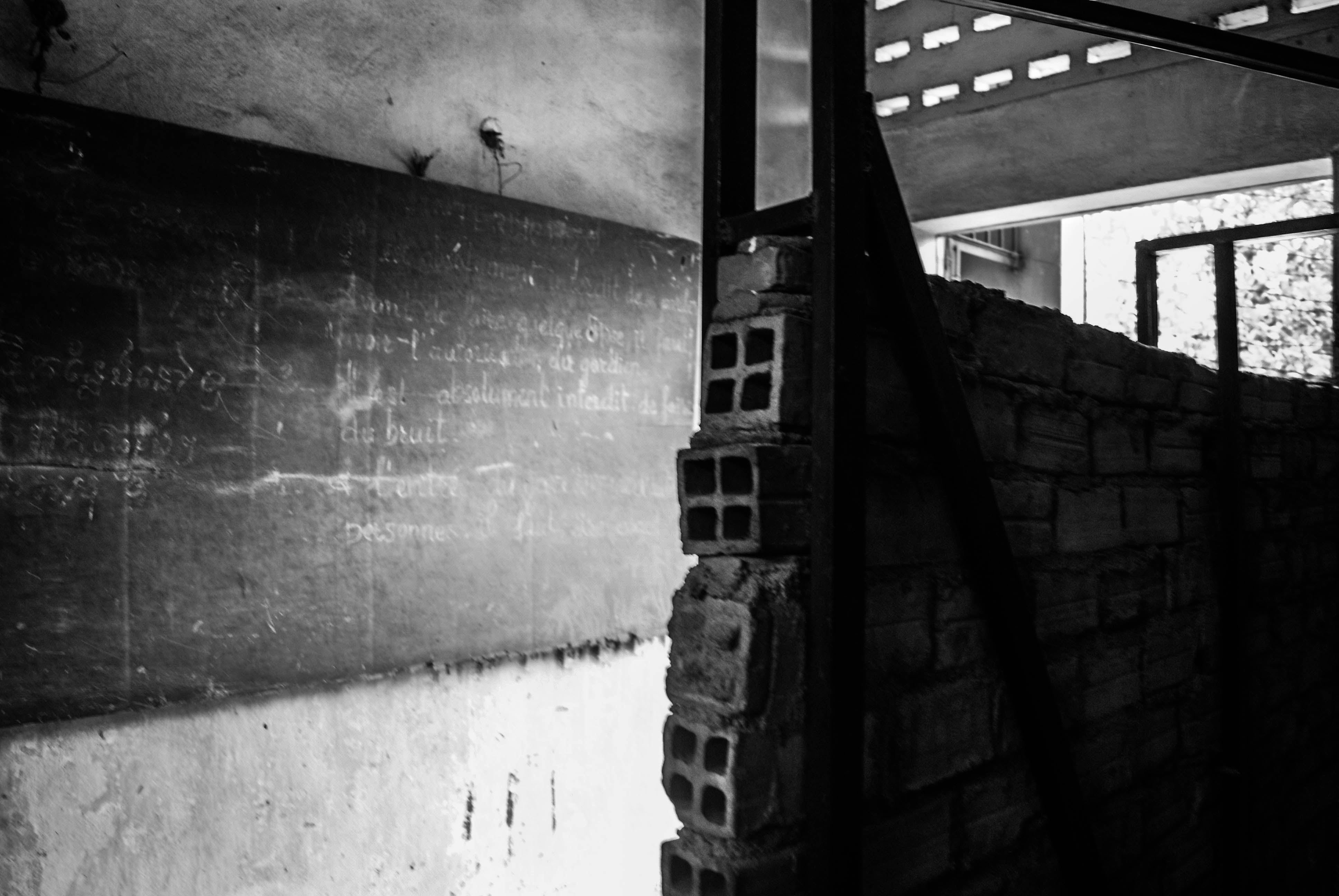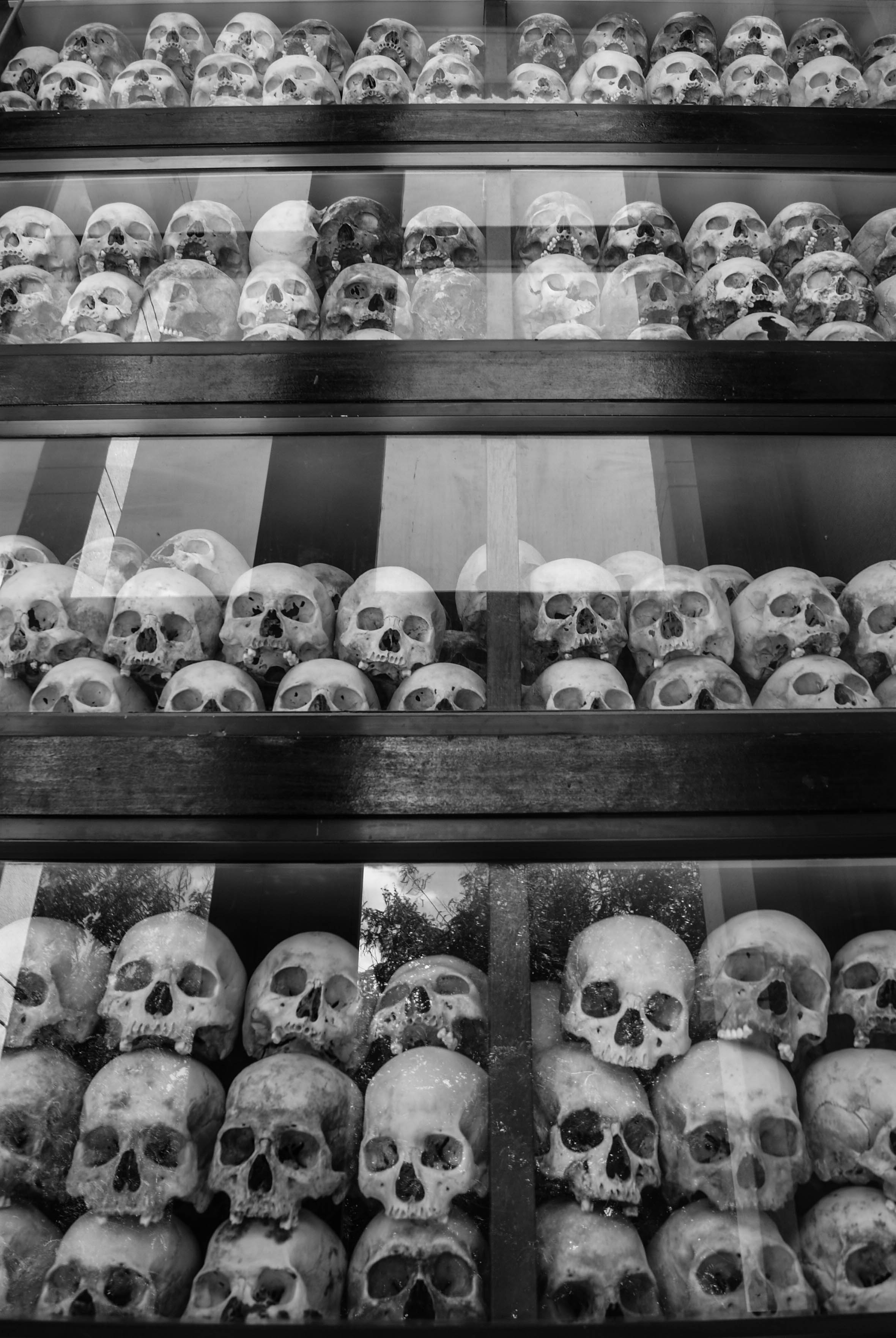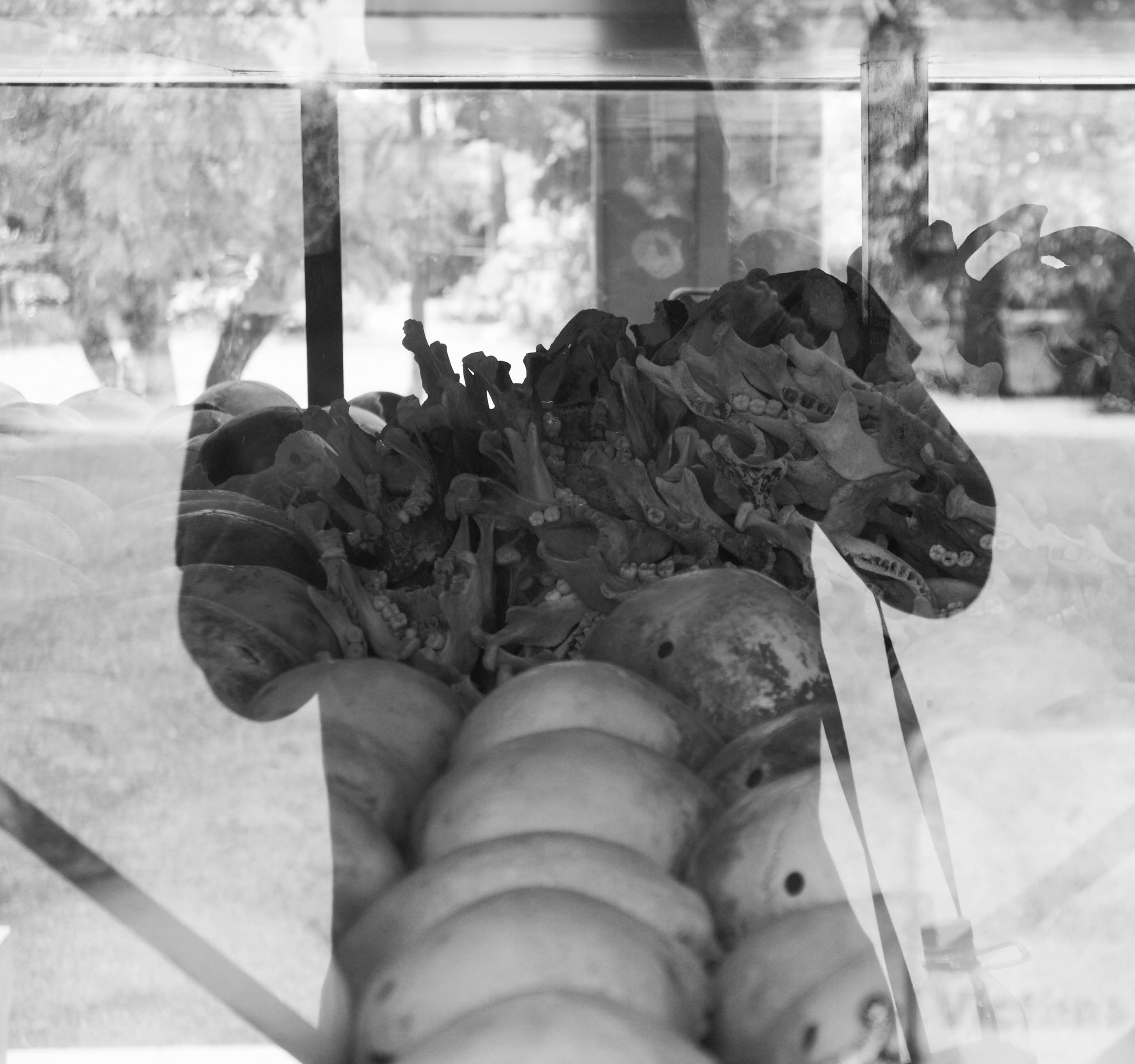Penhful day out
Phnom Penh is the capitol of Cambodia. 39 years ago, everyone living here was forced to leave their homes to start a new life in the countryside under the Khmer Rouge. Pol Pot wanted a complete agrarian society, and all intellectuals (doctors, teachers ect.) and anyone who was weak or otherwise in the way, was promptly executed. One of the most popular places to visit in this city today, is the Tuol Sleng Genocide Museum, an old high school turned into the S-21 security prison and execution center. My source, Wikipedia, estimates that between 17,000-20,000 people were imprisoned in the 4 years it was running as a prison. People were usually charged with working with CIA or supporting the old Non Lol regime, and were tortured until they confessed. There can still be seen blood on the floors of the tiny cells and interrogation/torture rooms.
Furthermore, there is a museum with pictures of all the prisoners, their biographies, and a collection of skulls. There is a graveyard in the playground area for the 14 corpses that were found once the prison was shut down – pictures of some of the corpses hang in the rooms they were found in, like some of the torture rooms.
It’s a creepy experience walking into the empty interrogation rooms with blood on the floor, knowing how much suffering has happened happened in here. Even more so in the rooms with photographs on the wall, taken after the prison was shut down. You have to squeeze through a tiny brick cell to get to the narrow hallway between all the cells of the prisoners, and it feels awful knowing that this is where people were chained for 2-3 months before taken away.
At night, the guards would load trucks with prisoners, telling them that they were going to be moved. They drove 15 km before stopping at Choeung Ek: the killing fields.
With a speaker playing propaganda music to drown out the screams, people had their throats slit with palm bark, or were hit in the skull with different tools. No guns were used, as bullets were expensive. Then the corpses were dropped in open graves.
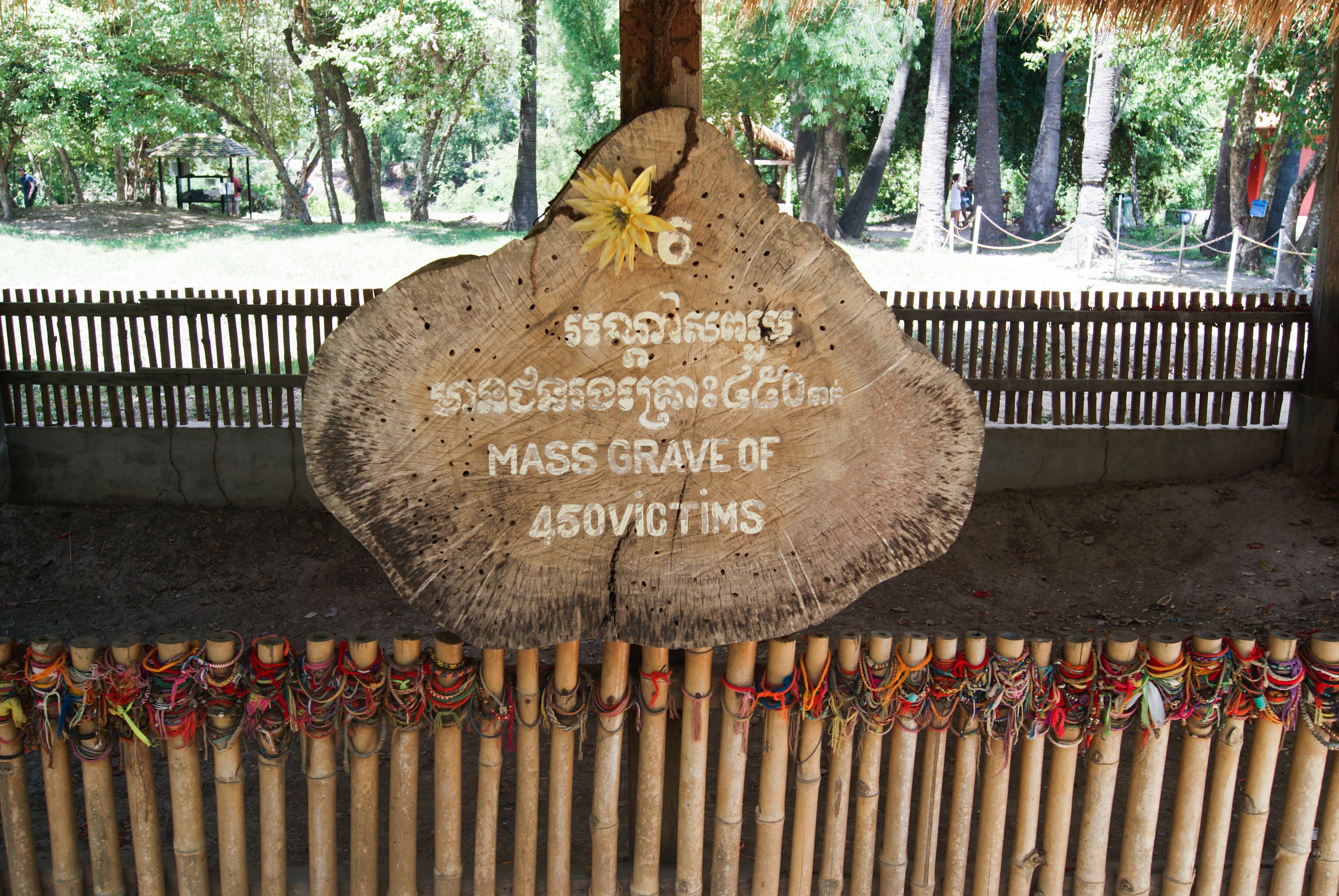
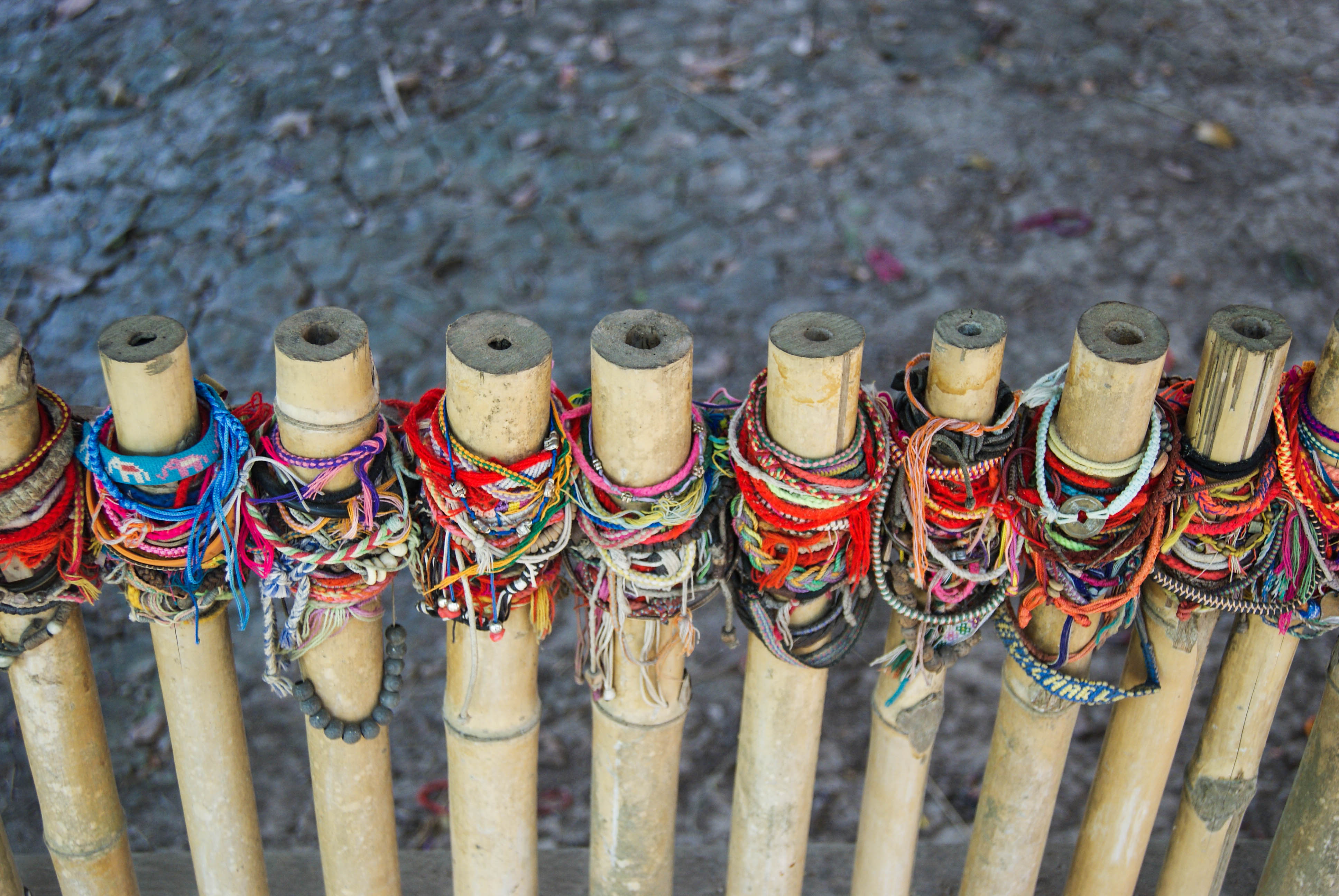 Visitors leave bracelets around the killing fields to pay their respects
Visitors leave bracelets around the killing fields to pay their respects
This is the biggest one. There are two other preserved graves – the one of a 100 headless soldiers, and the one of a 100 naked women and children. While a lot of women were imprisoned and killed because they were thought to be working with CIA, a lot of them were killed because of a Khmer Rouge saying: “When you dig up grass, you must even remove the roots”
That meant that whenever a man was killed, his entire family should die too, to prevent someone wanting revenge.
The killing tree is right next to the women and children’s grave. Guards grabbed children by their feet and smashed their heads into the tree, leaving traces of blood, brains and hair in the bark to be found later on. The mother’s were often stripped naked and forced to watch, until they themselves were executed and thrown into the grave with their children.
Finally, a tall building is raised in the field as a memorial, and containing clothes, bones and skulls of found victims. Around 9,000 in total.
So, at least that what I understood from my audio guide. It is both depressing and interesting to see how something so awful has happened – and so recently! Despite all the bad things that has happened, it’s a peaceful day with butterflies flying around, flowers growing all over, and people showing their respect in one way or another. It’s kind of reassuring to experience how calm it can be after such a storm.


 Bracelets on the Killing Tree. The one with the peace symbol seems very fitting
Bracelets on the Killing Tree. The one with the peace symbol seems very fitting
I wrote this a bit differently than I usually do, because I wanted to give people who know nothing about this part of Cambodia’s history a chance to understand what I am seeing today. I only really used Wikipedia because I’m lazy. But it’s definitely worth reading more about, especially what really happened in S-21! I recommend Survival in the killing fields by Hain Ngor, which is a great book by a doctor who pretended to be a taxi driver, survived three imprisonments and ended up winning an Oscar for a film about the dark years of Cambodia, but lost everything in the process. Less depressing post coming up.

